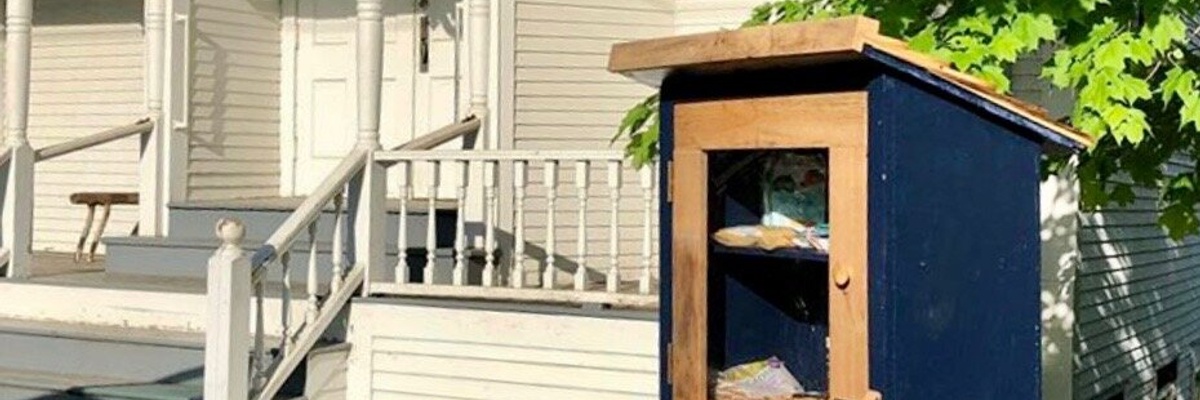
"With the support of ChangeX funding and following these 5 simple steps - you'll have your Little Free Pantry started in next to no time!" - Jessica McClard

Your Little Free Pantry can take as much or as little time as you have available to dedicate to it.Setting up your Little Free Pantry will take a few days over time to get up and running (planning, sourcing, creating, stocking, launching).We recommend assuming approximately 2 hours per week to maintain it thereafter.
Before you dive right into setting up your Little Free Pantry, we recommend taking a minute to plan out your approach.
Get familiar with the concept:
Determine your location:
Our most FAQ of all the FAQs is what is the best location for a Little Free Pantry - read about that here.
1. Build a Little Free Pantry
There are no organizational requirements re: design, but offer your host site design input. Build or purchase a box, repurpose furniture, use an old newspaper vending box. Call your project whatever you would like!
Feel free to replicate the pilot (resource includes design, cut and build plans!) Or build a structure suited to your aesthetic preference and needs. Googling "Little Free Library plans" yields lots of content, including specs. If your LFP will be on another's property, share your plans with the property owner for his or her approval.
If you're not inclined to build from scratch, have a look at these no-build options.
Or - borrow from the idea of how to turn a newspaper vending box into a little free library.
Maybe you want to jazz up your mini by installing a solar light - here's how!
Lastly, plan against vandalism on your mini pantry.
2. Stock the Little Free Pantry
The original LFP is stocked organically. Those who wish to contribute may do so at their discretion when convenient. Demand outpaces supply, so the LFP is often empty. However, empty shelves are problematic only if no one is contributing. At that point, you might want to organize a group of friends, neighbors, co-workers, church-goers. Thirty of these could be assigned a day of the month to contribute, for example. Please note that irregular supply is an effective control keeping both consumption and traffic manageable. Irregular supply minimizes loitering as well.
What should I stock?
Encourage your contributors to stock according to need. Discourage sharps (razors), chemicals, previously worn clothing (which adds bulk), or anything illegal. Generally, canned vegetables and proteins, personal care items, and paper goods go fast. Kid-friendly non-perishables, crayons, and inexpensive party favor items are great.
If your stock does not turn over frequently, monitor cans for bulging and leaking, especially during extreme temperatures. Also, if your LFP will be stocked organically, you won't always be able to control what's inside. However, a daily site visit will allow you to maintain a safe, neat space.
Here is some stock inspiration from othe LFP's around the world:
What do I do if my mini pantry is empty?
This is common! Read our guidance here.
Consider creating a dedicated social media account to communicate about your mini pantry. This will stoke interest. Once folks start shopping, you probably won't be able to keep your mini pantry full. DON'T TRY TO! A sometimes empty mini is an important control at the site that keeps stewards from policing behaviors and those shopping from loitering, etc.,(not to mention you'll wear yourself out trying to keep a small box full in a high need environment). What you can do is enough.
People will find it, even if you do nothing, but there are a few things you can do to help raise awareness.
Minis always need food - consider hosting a food drive!
Here are some resources to support the promotion of your mini pantry:
Think about how you might get more donations to keep it going past launch!
Add your mini pantry to the ever growing gobal map!
At first, there's a lot you won't know about your mini pantry. Learn from it before adding salt!